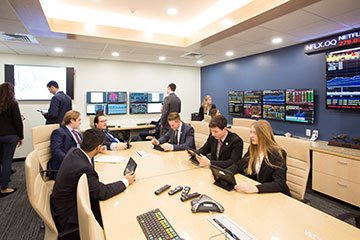Introduction to the Meaning of RWU UAR
In the rapidly advancing digital era, new terms, frameworks, and conceptual models continue to surface as technology pushes into uncharted territories. One such emerging concept is RWU UAR, a phrase that has begun generating interest in creative, technological, and strategic discussions. Although not yet a mainstream term, RWU UAR represents a broader movement toward enhanced digital adaptability, intelligent transformation, and unified automation. As innovators, creators, and businesses seek ways to expand their capabilities, the philosophy behind RWU UAR offers a glimpse into a future shaped by scalable systems and seamless digital evolution.
The Evolution of RWU UAR in Modern Environments
Over the last decade, digital environments have become more intricate, dynamic, and interdependent. To navigate this complexity, new digital structures and optimization strategies have emerged. This is where RWU UAR finds its foundation. Originally discussed in experimental technological spaces, RWU UAR has evolved into a concept that signifies transformation, unification, and responsiveness. As the digital world continues expanding, RWU UAR has steadily grown into an idea used to describe systems or models that prioritize adaptability, resilience, and enhanced integration.
Why RWU UAR Matters in Today’s Digital Landscape
In the modern world, efficient interaction, real-time adaptation, and scalable operations are no longer optional—they are essential. This rising need for agility has positioned RWU UAR as an invaluable concept. Whether in business operations, creative production, or digital communication, RWU UAR supports the shift toward systems capable of adjusting instantly to change while maintaining stability and performance. The appeal of RWU UAR lies in its emphasis on simplification, optimization, and unified digital flow—qualities highly sought after in both personal and professional digital ecosystems.
The Core Principles That Shape RWU UAR
To fully understand the value of RWU UAR, one must explore the principles that guide it. These principles—responsiveness, unification, and automation readiness—form the foundation of the RWU UAR ideology. Responsiveness ensures that systems built around RWU UAR can adjust to new situations without disruption. Unification minimizes fragmentation by connecting tools, processes, and platforms into a cohesive whole. Automation readiness ensures that repeated tasks, communication flows, and digital operations can be automated efficiently. When combined, these principles make RWU UAR a powerful framework for navigating the complex digital world.
RWU UAR as a Catalyst for Creative and Strategic Innovation
Creativity and strategy both depend on flexibility, clarity, and the ability to scale ideas. This is where RWU UAR becomes a tool of transformation. Creative professionals can use RWU UAR-oriented systems to streamline content production, improve organization, and expand their reach. Meanwhile, strategists adopt RWU UAR to enhance long-term planning, predictive modeling, and digital adaptability. The broad nature of RWU UAR makes it valuable across industries—including marketing, design, digital development, and business management—resulting in a concept that continues gaining traction.
Enhancing Productivity Through RWU UAR Practices
Productivity in the modern world relies on systems that reduce human workload while maintaining consistency. RWU UAR supports this goal by promoting workflow structures that minimize manual repetition. By incorporating RWU UAR frameworks into everyday processes, individuals and teams can automate recurring tasks, improve communication efficiency, and streamline operational flow. This ultimately leads to faster results, reduced frustration, and improved overall performance.
Strengthening Digital Connectivity with RWU UAR
Connectivity plays a crucial role in digital progress. Whether connecting people, data, or devices, meaningful connections drive collaboration and innovation. RWU UAR enhances connectivity by creating ecosystems in which information travels smoothly, tasks synchronize effortlessly, and platforms integrate naturally. As businesses and communities transition to more collaborative online environments, RWU UAR becomes a fundamental concept in supporting scalable digital relationships.
The Challenges of Implementing RWU UAR
While RWU UAR offers numerous benefits, it also introduces challenges. Many users struggle to understand the structure or technological depth behind RWU UAR. Without proper guidance, organizations may attempt to implement RWU UAR into incompatible systems or without the fundamentals required to support it. Additionally, the process of transitioning from traditional methods to RWU UAR-based frameworks requires time, patience, and consistent refinement. Yet with the right approach, these challenges can be effectively managed.
Future Growth and Trends Related to RWU UAR
As digital technology moves toward more integrated and self-adapting ecosystems, the future of RWU UAR appears highly promising. Experts anticipate that systems influenced by RWU UAR principles will help create the next generation of intelligent digital environments—ones capable of learning, adjusting, and expanding automatically. From business intelligence to creative automation, RWU UAR will play a significant role in shaping future technological landscapes.
Why Businesses Are Adopting RWU UAR
Modern businesses require systems that can adapt quickly to market changes, automate essential operations, and unify multiple digital tools. RWU UAR offers a path toward achieving all three. Through its emphasis on scalability and integration, RWU UAR supports higher efficiency, improved workflow clarity, and strengthened digital presence. These benefits have led many companies to explore RWU UAR-inspired models as part of their long-term digital transformation strategies.
RWU UAR and the Transformation of Digital Workflows
Today’s digital workflows demand a level of precision and flexibility that traditional systems struggle to deliver. RWU UAR introduces new methods for structuring workflows through automation, streamlined communication, and unified task management. Teams using RWU UAR-inspired systems often experience smoother processes, fewer errors, and more time to focus on innovation rather than manual tasks.
How Everyday Users Benefit from RWU UAR Concepts
RWU UAR isn’t just for large organizations or tech experts. Everyday users also experience significant advantages when applying RWU UAR principles to personal projects, educational pursuits, hobby management, or digital organization. By integrating RWU UAR strategies, users gain greater control of their time, improved consistency in digital routines, and enhanced overall efficiency.
Integrating RWU UAR Into Existing Digital Ecosystems
Integration plays a major role in maximizing the value of RWU UAR. Whether enhancing content production systems, improving communication channels, or optimizing workflow management tools, RWU UAR can be incorporated into nearly any digital ecosystem. When integrated correctly, RWU UAR transforms not only operations but the user’s ability to innovate and scale with confidence.
RWU UAR’s Influence on Digital Culture
Beyond technology, RWU UAR shapes cultural shifts toward automation, intelligent design, and unified digital movement. More people are embracing systems that simplify tasks, accelerate processes, and strengthen collaboration. As RWU UAR continues to expand, its cultural impact will likely grow, influencing how individuals and organizations think about digital progress.
Conclusion: The Lasting Importance of RWU UAR
At its core, RWU UAR symbolizes progress, automation, and unified innovation. Its principles support the rapid evolution of technology and empower users to navigate digital complexities with ease. Whether improving workflows, enhancing connectivity, or supporting scalable growth, RWU UAR is positioned to remain an influential concept in the future of digital advancement. As automation and intelligent systems continue to gain prominence, RWU UAR will help define the next chapter of digital evolution.








